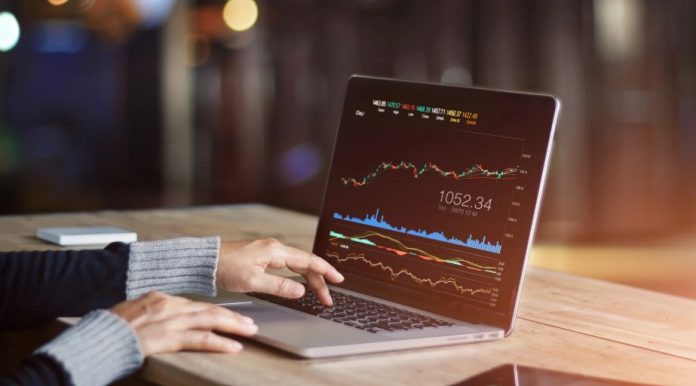Table of Contents
Leverage in crypto trading is a powerful tool that can amplify profits, but also significantly increase risks.
In essence, leverage allows traders to open positions larger than their actual account balance, magnifying both potential gains and losses.
While leverage can be a game-changer for skilled traders, it can be disastrous for those who underestimate its complexity.
With the growth of cryptocurrency markets and the popularity of derivatives trading on platforms like Binance, Bybit, and OKX, leveraged trading has become widely accessible.
According to a 2023 report by Glassnode, more than 30% of daily trading volume on major exchanges involves leverage, highlighting its integral role in the ecosystem.
Yet, misuse of leverage is a major reason why many traders lose money. Therefore, understanding how to use leverage safely is essential for both beginners and experienced participants.
This article offers a comprehensive look at safe leverage usage, including definitions, strategies, examples, risk management, and best practices.
What Is Leverage in Crypto Trading?

Basic Definition
Leverage refers to borrowing funds from an exchange to increase the size of a trading position. For example, with 10x leverage, a trader with $1,000 can control a position worth $10,000.
Key Terms:
- Initial Margin: The amount of capital you commit to a leveraged trade.
- Maintenance Margin: The minimum balance needed to keep a position open.
- Liquidation: Forced closure of a position when margin requirements are not met.
Benefits of Using Leverage
- Amplified Profits: With leverage, a small price movement can yield substantial returns. For example, a 5% increase in a 10x leveraged position results in a 50% profit on the initial investment.
- Capital Efficiency: Leverage allows you to deploy less capital while maintaining the same exposure, freeing up funds for other trades or yield strategies.
- Short-Selling Opportunities: Leverage is essential for trading both directions, allowing traders to profit in bearish markets by shorting crypto assets.
Risks of Leveraged Crypto Trading
- Increased Losses: Just as leverage amplifies gains, it also magnifies losses. A 5% decline in a 10x leveraged position can wipe out your entire margin.
- Liquidation Risk: Exchanges will automatically liquidate positions that fall below the maintenance margin, often with little warning.
- High Volatility: Crypto markets are inherently volatile. Combined with leverage, small market fluctuations can have outsized impacts.
- Emotional Pressure: Trading with leverage can lead to fear-based or irrational decisions, especially during fast-moving markets.
How to Use Leverage Safely?

- Start with Low Leverage: Beginners should start with 2x or 3x leverage. Even professionals often use modest leverage to reduce risk exposure.
- Use Stop-Loss Orders: Always set stop-loss limits to protect capital in case the market moves against you.
- Risk Only a Small Portion of Capital: Never risk more than 1–2% of your total portfolio on a single leveraged trade.
- Avoid Trading Highly Illiquid Assets: Low-volume altcoins can experience extreme slippage, making them unsuitable for leveraged trades.
Monitor Funding Rates and Fees
On perpetual futures, funding rates can impact profitability. Be aware of these recurring costs.
Smart trading tools like quantum ai offer risk management features, real-time funding rate alerts, and automated stop-loss setups to help traders stay safe while using leverage.
Case Study: Leverage Done Right
In early 2023, a trader on Bybit used 3x leverage to go long on Ethereum at $1,200, identifying support through technical analysis. They set a stop-loss at $1,100 and a target at $1,500.
- Entry: $1,200
- Exit: $1,500
- Gain: 25%
- Leveraged Gain (3x): 75%
Because the trader used low leverage, clear stop-losses, and analysis-backed entry, they maximized gains without risking liquidation. This highlights how leverage, when used carefully, can yield significant rewards.
Pros and Cons of Leveraged Trading

Pros:
- Higher potential returns.
- Efficient capital usage.
- Opportunities in both bull and bear markets.
- Enhanced strategic flexibility.
Cons:
- Magnified losses.
- High liquidation risk.
- Emotionally stressful.
- Requires advanced knowledge and tools.
Conclusion
Leverage is a double-edged sword. It can significantly boost your crypto trading profits when used correctly, but also destroy your capital just as quickly if mishandled.
Safe leverage trading requires a deep understanding of risk management, market behavior, and emotional control.
If you’re serious about using leverage, start small, use technical analysis, apply stop-loss orders religiously, and never overexpose your portfolio. Leverage should be viewed as a precision tool, not a lottery ticket.
Modern platforms and AI-based tools like Quantum AI offer robust support for managing leveraged trades, including real-time analytics, portfolio risk tracking, and trade automation.
By combining smart tools with disciplined strategy, traders can safely harness the power of leverage in the dynamic world of crypto.
FAQs
What is the safest leverage level for beginners?
Start with 2x or 3x leverage. High leverage (10x or more) is too risky for newcomers.
How do I avoid liquidation?
Use stop-loss orders, trade with low leverage, and always monitor your margin levels.
Can I make money with leverage in crypto?
Yes, many traders profit using leverage, but it requires discipline, timing, and a solid strategy.
What platforms offer safe leveraged trading?
Platforms like Binance, Bybit, and OKX are well-known. Tools like quantum ai enhance safety through smart analytics.
How much of my portfolio should I risk per leveraged trade?
Ideally, no more than 1–2% of your total portfolio should be at risk per trade.
Is leveraged trading legal?
Yes, but it depends on local regulations. Some countries have restrictions on margin and derivatives trading.
Do all crypto exchanges offer leverage?
No. Some only offer spot trading. Derivatives platforms specifically provide leveraged options.
Are there fees involved in leveraged trading?
Yes. You’ll encounter trading fees, funding fees, and possibly interest on borrowed amounts.
Can I use leverage to short the market?
Absolutely. Leverage allows you to profit from price declines by opening short positions.
What happens if I’m liquidated?
Your position is closed automatically, and your initial margin is lost. You may also incur liquidation penalties.


